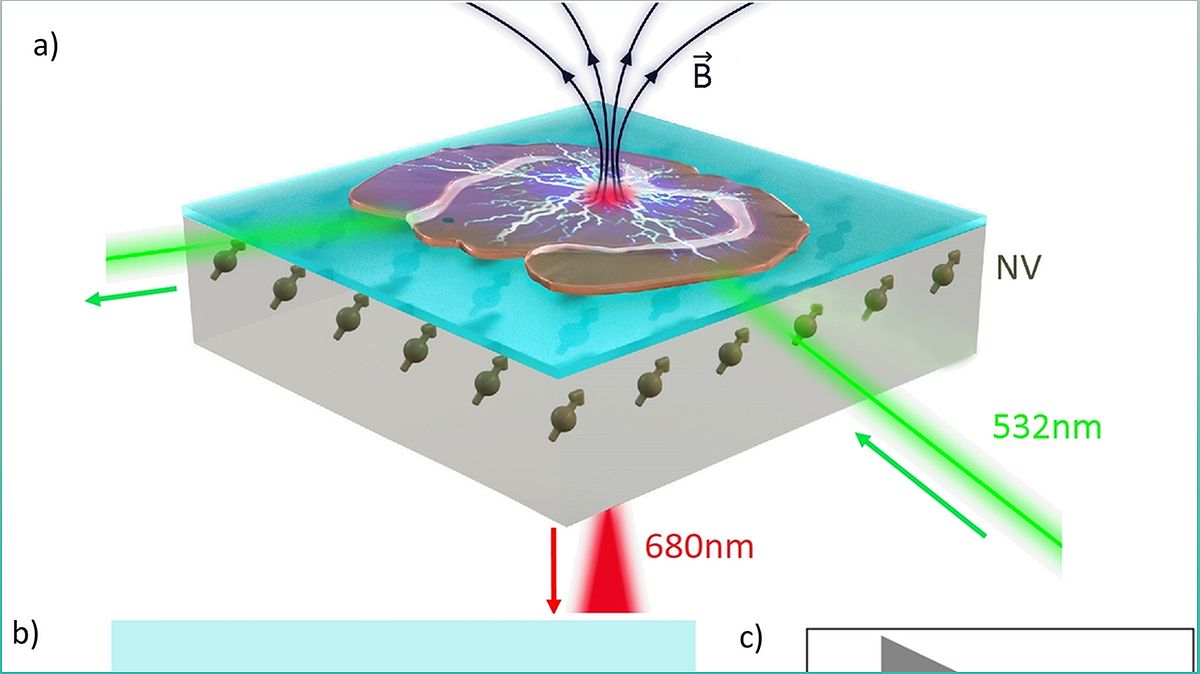As we delve deeper into the intricacies of the human brain, innovative technologies like diamond sensors and neuromodulation are revolutionizing the way we study, diagnose, and treat neurodegenerative diseases. European scientists have harnessed the power of diamond sensors, capable of tracking the subtle electrical activity of neurons, to gain insights into the early stages of neurodegenerative diseases. These sensors measure weak magnetic fields produced by nerve cells, providing a minimally invasive approach to studying brain activity. Additionally, neuromodulatory nanomaterials and resistive random-access memory are enhancing our understanding of brain function and have potential applications in assistive technologies and robotics. This article explores these cutting-edge advancements and their impact on the field of neuroscience, offering a glimpse into the future of brain research and treatment possibilities.
Diamond Sensors: Unveiling the Secrets of the Brain
Diamond sensors, utilizing color centers in diamonds, have emerged as a groundbreaking technology in brain research. These sensors can record the electrical activity of neurons within living brain tissue, providing valuable insights into neurodegenerative diseases. By detecting minor changes in the early stages of these diseases, diamond sensors offer the potential for early diagnosis and more effective treatments.
What makes diamond sensors particularly remarkable is their ability to measure the weak magnetic fields produced by nerve cells during communication. This non-invasive approach eliminates the need for invasive procedures, making it a promising tool for clinical applications in the future.
Neuromodulation: Bridging the Gap between Biology and Technology
Neuromodulation, coupled with nanomaterials, is a cutting-edge field that aims to influence the growth and functionality of neural cells. By incorporating soft and nanomaterials into advanced micro/nano-implants, researchers are paving the way for high-resolution operation and biocompatibility in neuromodulation strategies.
These advancements have the potential to significantly enhance our understanding of various neurological conditions and improve treatments. Imagine a future where predictable and compliant neuromodulated neural devices can provide personalized and effective therapies for individuals with brain disorders.
Resistive Random-Access Memory: Unlocking New Possibilities
Researchers have developed a highly reliable 3D channel memory for a neuromorphic sensory system using resistive random-access memory (RRAM). This system, incorporating a crossbar array of two-terminal multilevel RRAM, shows promise in hand gesture recognition and motor function analysis.
With a recognition accuracy comparable to software neural networks, this technology has the potential to revolutionize sensory systems. Its applications extend beyond neuroscience research and could find use in assistive technologies and robotics, enabling more intuitive and precise interactions between humans and machines.
The Future of Brain Research
The integration of advanced technologies, such as diamond sensors, neuromodulation, and resistive random-access memory, is ushering in a new era in brain research. These innovations hold the key to unlocking the mysteries of the human brain and developing more effective treatments for neurological disorders.
While these technologies are still in the developmental stage, they offer immense potential for improving our understanding of brain function and providing personalized therapies. The future of brain research is bright, and we are on the cusp of groundbreaking discoveries that will shape the way we approach brain disorders.

